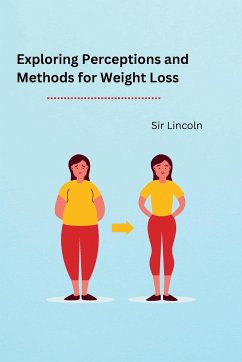More than two-thirds (70.2%) of adults in the United States (U.S.) are categorized as overweight or obese, indicating a significant health concern (source: "Adult Obesity Causes & Consequences", 2019). Tennessee holds the 15th position among all 50 states in terms of adult obesity rates and the 20th position for obesity rates in youth aged 10 to 17 (source: "State Briefs", 2019). Within the aforementioned 70.2% of adults, 32.5% are overweight, while 37.7% are classified as obese (source: "Overweight & Obesity Statistics", 2017). A data brief by the National Center for Health Statistics covering the period 2013-2016 reveals that nearly half (49.1%) of U.S. adults attempted weight loss within the past 12 months (source: Herrick, Ogden, & Sarafrazzi, 2018). Despite the abundance of nutrition information provided by celebrities, weight experts, government agencies, and self-proclaimed authorities, achieving healthy weight loss and sustainable weight management can be challenging. In addition to the associated health risks, overweight and obesity lead to significant healthcare expenses (source: Finkelstein, Trogdon, Cogen & Dietz, 2009). Obesity stands as a major independent risk factor for costly diseases like type 2 diabetes, with over 90% of individuals with type 2 diabetes being overweight or obese (source: Jensen et al., 2014). According to the American Diabetes Association, the total cost of diagnosed diabetes reached $327 billion in 2017, rising from $245 billion in 2012 (source: Yang et al., 2018). This represents a 26% increase over a five-year period (source: Association, 2019). Overweight and obesity also significantly impact healthcare expenses by increasing the prevalence of chronic medical conditions, impairing health-related quality of life, and elevating healthcare and medication costs (source: Kelishadi, Djalalinia, Qorbani, Peykari & Kelishadi, 2014). Extensive research has established links between diet and disease, facilitating the promotion of dietary recommendations for chronic disease prevention. The "2015-2020 Dietary Guidelines for Americans" distill scientific findings into concise, food-based advice that Americans can rely on to make healthy and enjoyable dietary choices (source: "2015-2020 Dietary Guidelines", 2019). These guidelines offer a comprehensive set of evidence-based recommendations for adopting healthy eating and physical activity patterns, with the aim of reducing the risk of various chronic diseases. The recommendations serve as guidance for public policies and practice guidelines for healthcare professionals, empowering individuals to enhance and maintain overall health while minimizing the risk of chronic diseases (source: "2015-2020 Dietary Guidelines", 2019). Key recommendations include consuming the appropriate number of calories, making fruits and vegetables comprise half of one's plate, opting for whole grains, choosing low-fat or fat-free milk and yogurt, selecting lean proteins, and limiting intake of saturated and trans fats, added sugars, and sodium.








